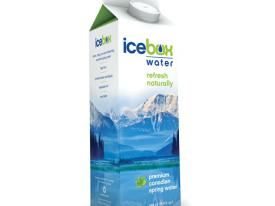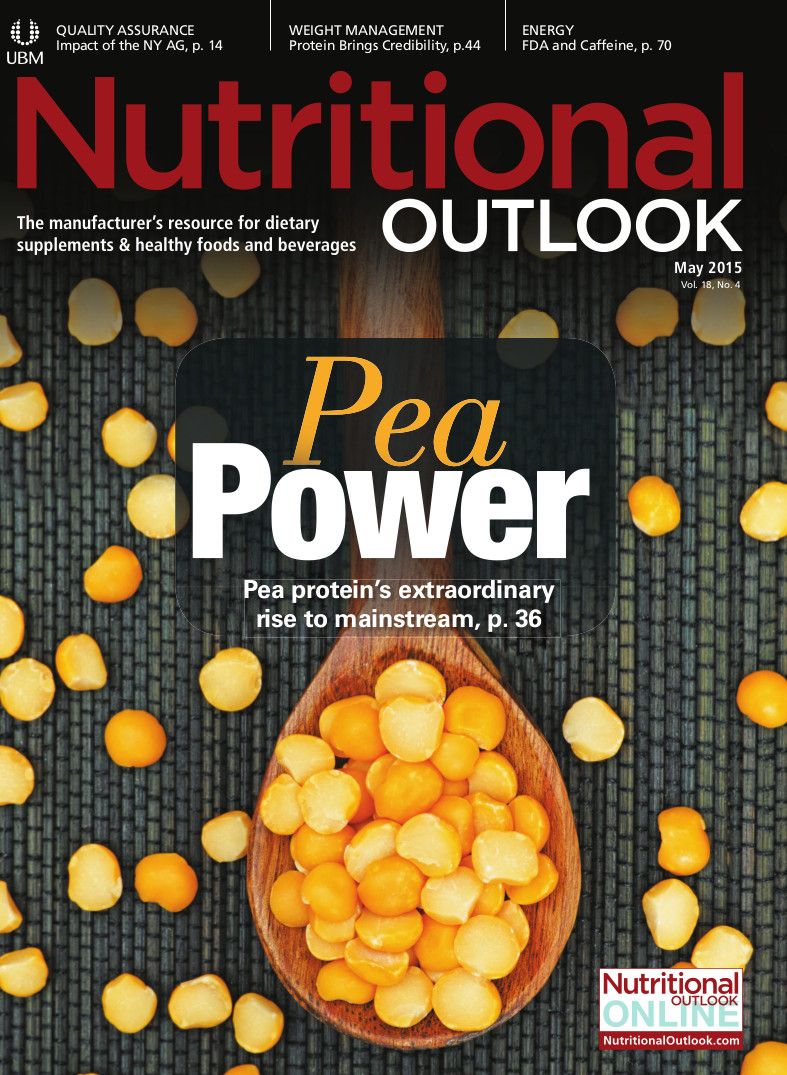Drink Boxes: How Paper Cartons Moved In on the Water Market
Actually, water is somewhat late to the paper-packaging party.

From added flavors, bubbles, and vitamins to, quite simply, pulling off the marketing coup of selling consumers something they could get from the tap for free, water marketers have captured consumers’ interest by continually presenting them the world’s most widely consumed beverage in an attention-grabbing new light. Only in recent years, however, have they presented it in a new package: the paperboard carton.
Barriers to Entry
Actually, water is somewhat late to the paper-packaging party. “It’s true,” says Andrew Reynolds, president of operations, Icebox Water (Cold Spring Harbor, NY). “You see milk, juices, and, a little farther afield, soups in boxed packaging.” So why no water until recently? He cites two driving forces that kept the carton closed, so to speak, until around 2007-when his company’s product debuted.
First was the engineering challenge. “Juices, milk, and dairy are much more viscous fluids, meaning that they’re thicker and cannot permeate the paper used in box containers,” he explains. Not so water, which easily soaks through paper, “creating a soggy mess,” he says. And though earlier generations of cartons incorporated wax liners to prevent leaking, that layer hampered, or even prohibited, recycling. Newer package designs like the one his company uses helped square that circle. “It’s paper lined with a very thin aluminum barrier and binding layer,” he says, which not only holds water with no threat of leakage or package disintegration, but is readily recyclable with the right facilities, too.
But beyond the engineering hurdle lay conceptual barriers to drinking water from a box, as well, he says. “Consumers just haven’t been accustomed to it,” he says. Their resistance, however, is beginning to crumble.
Danilo Zorzan, product director for packaging supplier Tetra Pak (São Paulo, Brazil), senses the shift, although he notes that in the economy-water market, “the role of packaging in attracting consumers is relatively low” and that the norm is still PET (polyethylene terephthalate) bottles. Even for premium products, the need “to show the purity of the water within” dictated packaging transparency. But at long last, he says, cartons “are making inroads into the water sector.”
Paving the Way
Many credit carton-borne coconut waters with paving the way for “plain” boxed waters. (See sidebar below.) And it’s hard to ignore the influence that coconut water has had. “Worldwide, the number of product launches in the coconut-water sector has more than quintupled,” Zorzan says, rising 540% in the past five years alone. Globally, estimates place the market’s value at about €220 million, with Brazil and the United States accounting for most of the consumption and growth.
Zorzan says that Tetra Pak was the first company to introduce aseptically packaged coconut waters capable of withstanding long-term storage and of being packaged without losing their native texture or nutritional value. And as coconut water has evolved from a niche product to an increasingly popular drink, he says it’s moved boxed packaging along with it.
That’s spread the medium’s advantages across the water category, Zorzan says, and he lists product differentiation as principle among the benefits. “Carton packaging is relatively novel in the water market,” he points out. “It provides good branding opportunities, stands out on the shelf, and offers an excellent drinking experience for on-the-go consumption.” Add to that its improved ergonomics, light-barrier properties, and its reliance on a main resource-paperboard-that’s renewable and what he calls “an innovative alternative to the default of glass or plastic bottles,” and you have a winner.
So with companies like Icebox having cleared the ground for paper cartons within the water sector, other water marketers are following their lead. But far from seeing the new entrants as nibbling away at his company’s slice of the market, Reynolds believes they’re expanding the whole pie. “We welcome the likeminded companies and believe this is more than a trend,” he says.
Socially Conscious Cartons
That said, what’s in the carton for consumers, other than the novelty factor? For one, Reynolds says, “Without changing their behavior, they get to consume a product with a much smaller carbon footprint compared to plastic bottles.”
Part of that reduction comes from distribution efficiencies. Namely, his cartons ship flat, allowing 1.05 million empties to fit a 53-foot trailer. By contrast, that same trailer could carry only 95,370 empty plastic bottles, “meaning it would take 11 trucks to get the same amount of material-empty 500-ml plastic bottles-to the co-packer for filling compared to one truck of our flat shipped cartons,” he says. Even better, while bottles and cartons often require shipment to just such a co-packer for filling, Icebox fills its cartons at the water’s source-True North Springs in Canada’s Notre Dame Bay-“so there’s no additional transportation of the water,” Reynolds says.
The cartons are also revolutionary in being 100% recyclable where facilities exist-a quality that’s as important to Reynolds as it is to mindful consumers. “Plastic pollution is a major problem,” he says. “Too much is used and not enough is recycled.” Paperboard cartons help correct that imbalance by reducing the quantity of plastic that enters the waste stream in the first place.
And though plastic bottles are largely recyclable, too, only about a third actually get recycled, Reynolds notes. Of course, his ideal would be for all consumers to recycle all of their beverage packaging, but with 76% of his cartons coming from paper-itself sourced mostly from sustainably managed forests-he takes solace in knowing that if the cartons do wind up in a landfill, at least their paper portion will break down, the aluminum will eventually oxidize, and only the remaining plastic will persist.
Embracing Change
With so much going for paper, then, what are we waiting for? The barrier, Reynolds believes, is consumer education. “Consumers as a whole are unfamiliar with the product and may require education as to the importance of sustainable packaging solutions,” he says. And once we can get them on board, the incentive will be there for marketers not only to serve their consumers, but to put a dent in what he calls the “plastic pollution problem” at the same time.
Also read:
Top Tips for Formulating Healthy Beverages
Turmeric Beverages, Yellow or Not (Slideshow)
Sidebar: Going Coconuts
Taking measure of the coconut-water phenomenon
We know: It may be hard to imagine a time before coconut water. (Call it the “B.C. era,” if you like.) But Steve Siegel, vice president, Ecuadorian Rainforest LLC (Belleville, NJ), can, in fact, recall that bleak span of years before the biggest beverage trend to hit beverage aisles since Evian first broke.
“It wasn’t that long ago that sales of coconut water were dragging,” Siegel reminisces. And yet when category pioneers hit the scene-often in aseptic paperboard cartons, if not reliable old cans-the waters, which are actually the clear liquid tapped from young green coconuts, “had only a meager following” among dedicated health-and-wellness consumers, he says.
How things have changed. “Today,” Siegel muses, “the industry is more alive than it’s ever been.” Citing Euromonitor reports, he predicts that the market for coconut waters will top $1 billion “in the very near future,” he says.
And it’s no mystery why. Today’s beverage space is a battleground, with everyone from celebrity chefs to city councilmembers to public-health sages pointing their fingers at sugary sodas, sports beverages, and pseudo-juices as culprits in what some call a national obesity epidemic. Coconut water, with its low caloric content, naturally sweet taste, and rich supply of electrolytes, is a nature-made alternative fit for health-conscious consumers desperate for drinks that “quench thirst while also delivering vital nutrients,” Siegel says.
So what does coconut water offer? One cup can pack up to 2.6 g of fiber, Siegel says, which works out to about 10% of the daily amount recommended for healthy digestion. “Coconut water may also offer a number of essential nutrients, including magnesium, copper, and potassium,” he continues. “In an age when consumers want both nutrients and convenience, coconut water makes it easy to have both.”
Even better, it pleases the palate with its sweet, nutty profile. And for manufacturers worried about processing challenges and shelf-life issues, rest assured: formulation-friendly formats await. “For manufacturers who need coconut water with a long shelf life,” Siegel suggests, “the powdered form would be their best bet.”
Photo from Icebox Water

Senate Committee has released the text of 2024 Farm Bill, with changes to hemp regulations
November 19th 2024The U.S. Senate Committee on Agriculture, Nutrition, & Forestry has introduced the Rural Prosperity and Food Security Act, which will serve as the Senate’s draft for the 2024 Farm Bill.